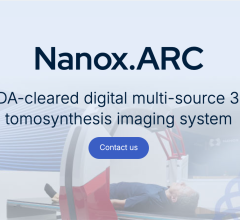
Greg Freiherr has reported on developments in radiology since 1983. He runs the consulting service, The Freiherr Group.
BLOG: Clinical Demands in Rural America Call for Advanced Imaging

Image courtesy of Pixabay
Rural America does not show up in any atlas but, geographically, it accounts for 80 percent of the United States’ land mass, according to the National Organization of State Offices of Rural Health. About 62 million people live there, all of whom have the same clinical needs as those who live in big cities. Meeting their needs, however, can be very hard, especially when it comes to high-tech imaging.
Rural health centers typically struggle with the double whammy of tight budgets and limited resources. Often these centers have trouble affording the magnetic resonance imaging (MRI) and computed tomography (CT) scanners that are common in big cities. That’s why some rural facilities opt for workarounds. One is to contract with mobile providers.
One mobile MRI provider visits Republic County Hospital of Belleville, Kansas, twice a week. But that may not go on for long. The 25-bed critical assess hospital is considering the installation of an MRI scanner on site, according to David-Paul Cavazos, CEO of Republic County Hospital.
Part of the Great Plains Health Alliance, the Republic County Hospital is bookended by more than a dozen MR scanners in Salina, Kansas, and Lincoln, Nebraska. But to take advantage of them, patients must drive more than an hour or nearly two hours, respectively.
“Agriculture is a big employer around here,” Cavazos said. “It’s not easy to just walk away from farm work.”
Traveling long distances can be difficult for rural residents. Patients of Star Valley Medical Center faced this challenge.
The medical center they depended on — a 22-bed, critical access hospital in Afton, Wyoming — used a mobile MR unit until their needs exceeded the capacity of the service. With its mobile unit booked well in advance, patients who urgently needed a scan had trouble getting scheduled. The backlog was also leading some patients to drive 70 miles to Jackson Hole for their MRIs.
Surveys Indicate Clinical Needs
After surveying patients and physicians about what they expected from MRI services at the hospital, administrators at Star Medical Center decided to purchase an MRI scanner, choosing one that meets the broadest needs of the patient population.
Serving patients since 1970, West Feliciana Hospital in St. Francisville, LA., installed an MRI scanner, which — similarly — took over from a once-a-week mobile service. The stationary system was acquired after a survey strongly indicated that hospital physicians wanted an MRI scanner on-site.
Although some patients were opting to trek 40 miles to Baton Rouge for MRIs, overall patient demand for MRI was low. But there was potential for growth.
Differing Selection Criteria
Whereas rural health systems often struggle to obtain the technologies to serve their patients, urban ones may offer many such technologies. The needs of rural providers are both simpler and more challenging than those of urban centers, as rural providers must find systems that can handle all patients who come to them. With their oval bores, the 1.5T scanners at Star Valley Medical Center and West Feliciana Hospital exemplify this -- designed to deliver quality MR images regardless of the patient.
For rural providers, therefore, success in meeting imaging needs may depend on finding the common denominator rather than the uncommon.
Greg Freiherr is a contributing editor to Imaging Technology News. Over the past three decades, he has served as business and technology editor for publications in medical imaging, as well as consulted for vendors, professional organizations, academia, and financial institutions.
Editor’s Note: This blog is the second in a series on Rural Healthcare in America. The first blog, Rural Imaging Requires Affordable And Versatile Equipment, can be found here.
Related content:
Rural Imaging Requires Affordable And Versatile Equipment
Rural Imaging Requires Affordable And Versatile Equipment
Health Disparities Affect Millions in Rural U.S. Communities


 November 11, 2025
November 11, 2025 









